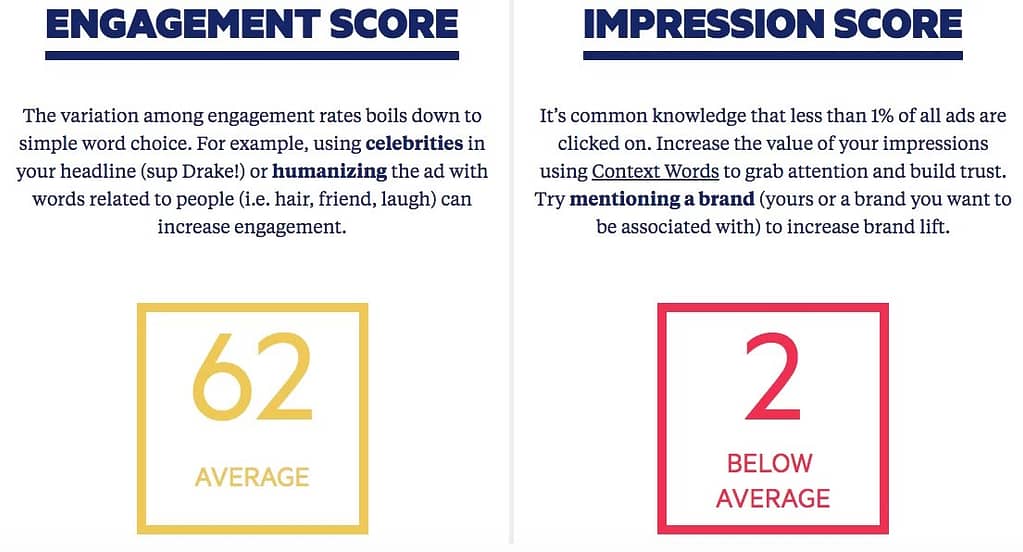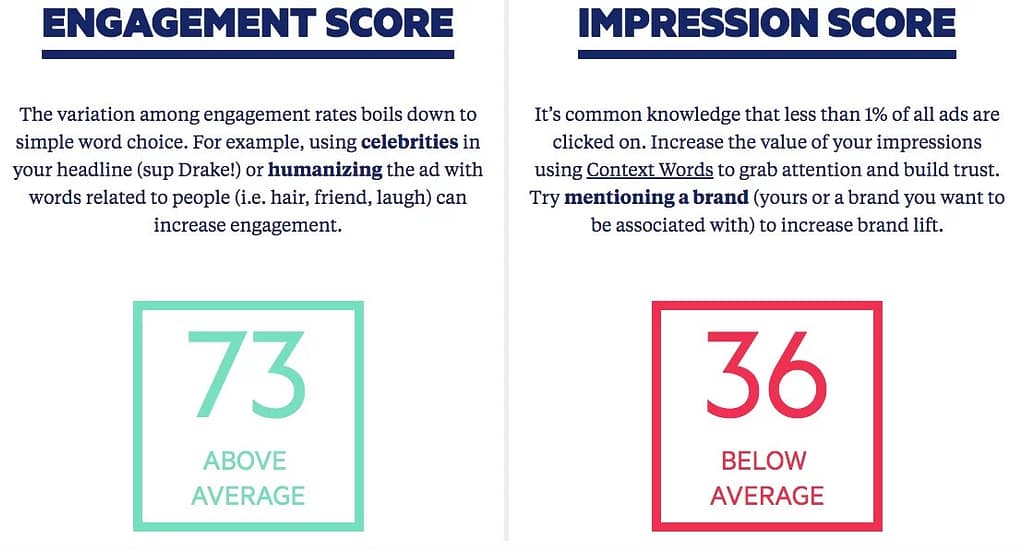Admit it. You feel pressure when writing headlines.
How could you not? So much hinges on you getting that one line right.
According to David Ogilvy:
“On the average, five times as many people read the headline as read the body copy. When you have written your headline, you have spent eighty cents out of your dollar.”
I’ve been a copywriter for nearly two decades and I still second guess myself, even when I come up with a page full of solid headlines options.
So when I discovered headline analyzers, (http://coschedule.com/headline-analyzer http://www.aminstitute.com/headline/ and http://headlines.sharethrough.com/) I was excited. But I was also skeptical. Headline writing is both an art and a science. How accurate can these tools really be?
To find out, I decided to see how they would rate some of the most well-known and regarded headlines of all time. You can see the results below. But first, let’s take a look at each of the three analyzers.
The CoSChedule headline analyzer assigned a score from 0 – 100 based on factors such as headline type, length and sentiment, as well as which types of words make up the headline.
The Advanced Marketing Institute’s Headline Analyzer compares the words in a headline with the words on its Emotional Marketing Value (EMV) Impact list to calculate the headline’s EMV percentage.
Sharethrough’s tool gives scores for overall quality, engagement and impression using a complex algorithm based on behavior model theory and neuroscience and advertising research.
These are the ad headlines I chose and how each analyzer scored them.
They Laughed When I Sat Down At the Piano But When I started to play!—
This is John Caples’ most famous headline. And that’s saying a lot. He was one of the most successful and influential copywriters of all time. He was inducted into the advertising hall of fame in 1978 and even has a prestigious award named after him.
This particular ad brought in record response for the client, the U.S. School of Music, and continued to run for several years.
So how did it fair in the headline analyzers?



Maybe that’s just an anomaly. Let’s see how the next headline does.
“At 60 miles an hour the loudest noise in this new Rolls-Royce comes from the electric clock”
David Ogilvy wrote many successful ads, so picking just one headline to test was a challenge. But this might be his most famous one. Plus, we wrote that it was the best headline he’d ever written. That’s good enough for me—but apparently not for the analyzers.



Let’s try a shorter automobile headline.
Lemon
It doesn’t get more iconic than this ad headline. It is one of the most well-known and recognized in Ad Age’s top ranked advertising campaigns of the twentieth century.
Surely this will rank well in the headline analyzers.

This headline failed to even register in the EMV analyzer.

That’s probably fitting given that William Bernbach was leading the agency that created this ad. He would have denounced these headline analyzers before the results were even delivered.
Maybe the problem is that you need an image of the car to provide context. So let’s look at a headline that stands on its own.
How a “fool stunt” made me a star salesman
This headline is often cited as an example of effective headline writing. Even such luminaries as John Caples, Victor Schwab and Dan Kennedy have included it in their books.
Here are the results from the headline analysis tools:



A little better than the others, but still not great. Let’s look at a couple more.
Do you make these mistakes in English?
The ad this headline was taken from didn’t just work. It worked for an insane amount of time. It ran for over 40 years!
And the results of the headline analysis are…



All the examples so far are classics from years past. Will something a little more recent do better?
For more information on lung cancer, keep smoking
You might have seen this anti-smoking headline making the rounds on the internet. It’s clever, memorable and speaks to the reader’s self-interest.
The headline analysis scores are shown below.


Conclusion
As you can see, these tools are far from foolproof. To be fair, CoSchedule’s tool is meant for blog posts rather than advertisements. But I suspect you’d have similar results running blog heeadlines.
While there are certain elements you can find in effective headlines, there is no formula or algorithm that can guarantee or predict success.
So what can you do to improve your odds of nailing the headline?
First, make an effort to understand why successful headlines work for their intended audiences. Go beyond specific words, length and variables and consider the larger strategy. What’s the psychology behind it, and how does that translate to other situations?
Second, run your own split tests. For landing pages, you can use a program like Optimizely or Visual Website Optimizer. Or if you prefer a free option and have a little bit of tech savvy, Google Analytics includes a testing feature.
To test blog post headlines, Thrive Themes has an outstanding new tool.
Feature image by Jiri Navratil (Own work) [CC BY-SA 4.0 (http://creativecommons.org/licenses/by-sa/4.0)], via Wikimedia Commons








Leave a Reply